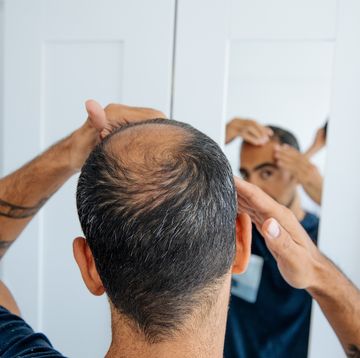An estimated 50 million American men have given up the battle against genetic hair loss. But scientists unwilling to surrender have taken a step forward in the fight: A recent study identifies a molecule called laminins-511 that tells hair follicles to start the growing cycle. The protein acts like a messenger traveling beneath the inner-layer of skin to jumpstart the hair-growing process.
Researchers believe these findings may one day be the solution to male-pattern baldness, as well as hair loss from chemotherapy or severe burns. But there is a catch: Researchers conducted the study on mice, and since mouse and human hair growth are different, further investigation is necessary.
In the study, laminins-511 was successful in initiating the very first hair-growth cycle, which simply repeats as an organism ages. Researchers hope the protein will also work to make hair grow later in life for humans.
Male baldness associated with aging is the obvious target of such research, because it involves hair follicles that simply get stuck in the hair-growing cycle. The prospect is that laminins-511 can make them unstuck, said Dr. Ronald Crystal, chairman of genetic medicine at New York Presbyterian Weill Cornell Medical Center in New York City.
The study authors are exploring options for manufacturing large enough quantities of laminins-511 for human clinical trials and petitioning the FDA for approval now. They anticipate the process will take at least 2 years.
But FDA approval shouldn’t be a problem—laminins-511 is naturally produced by the body, so there shouldn't be any adverse side effects.
But you don't have to sit and watch your hair thin as you wait for more trials: Click here for our guide to lessen your losses. And check out our grooming guide to fine-tune the rest of your appearance so you look your best, no matter how much hair you have—or don’t have.












